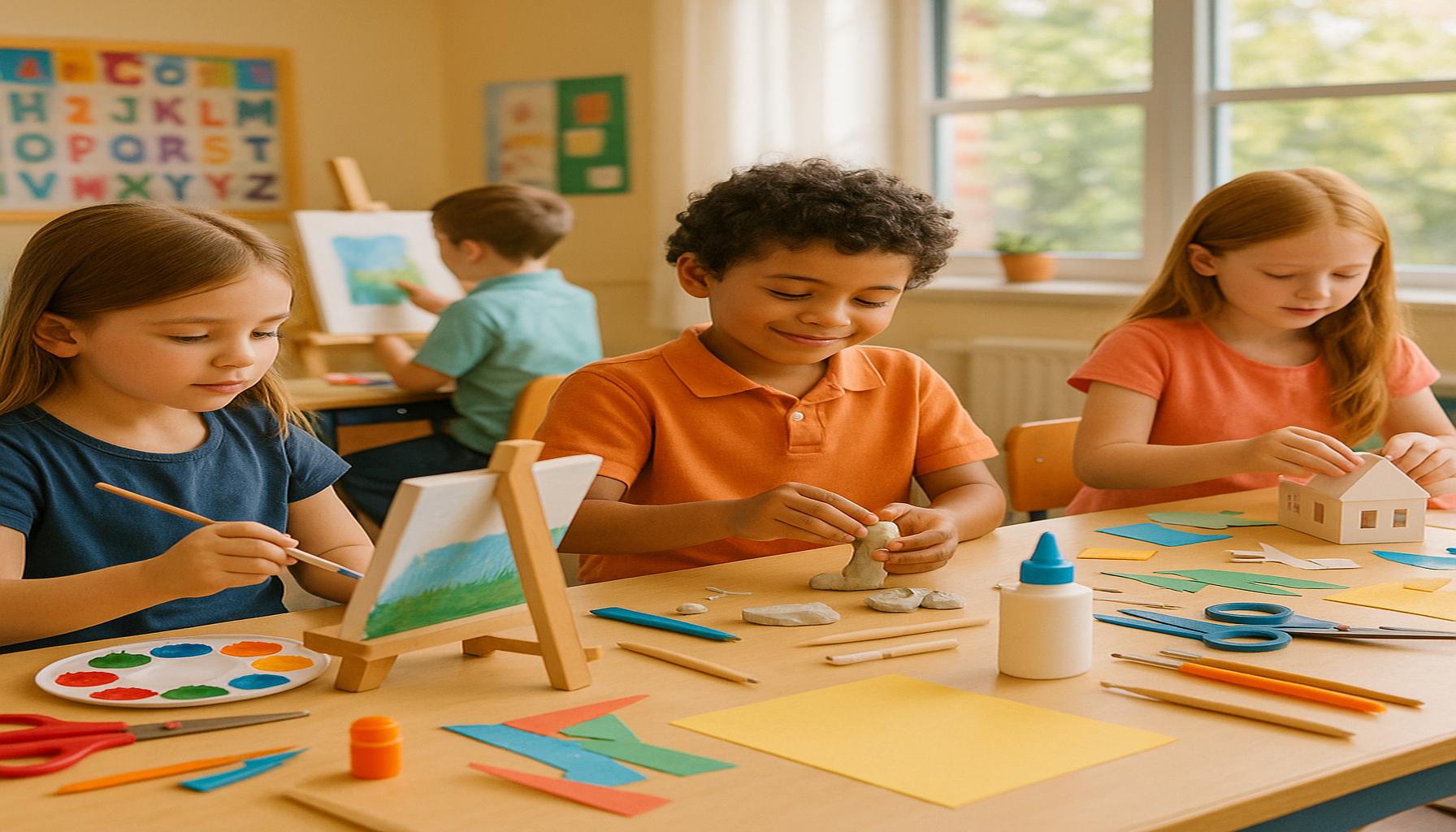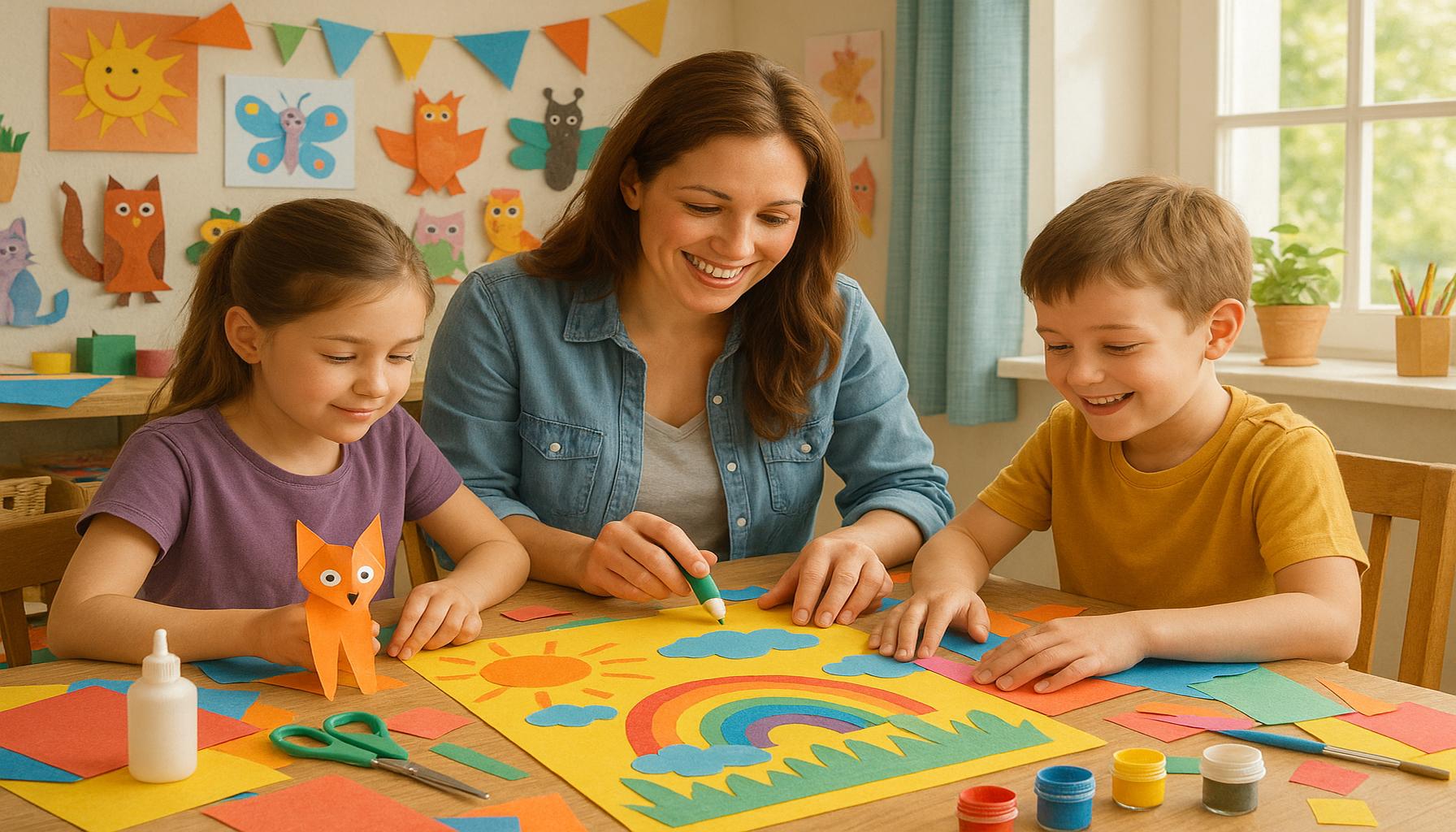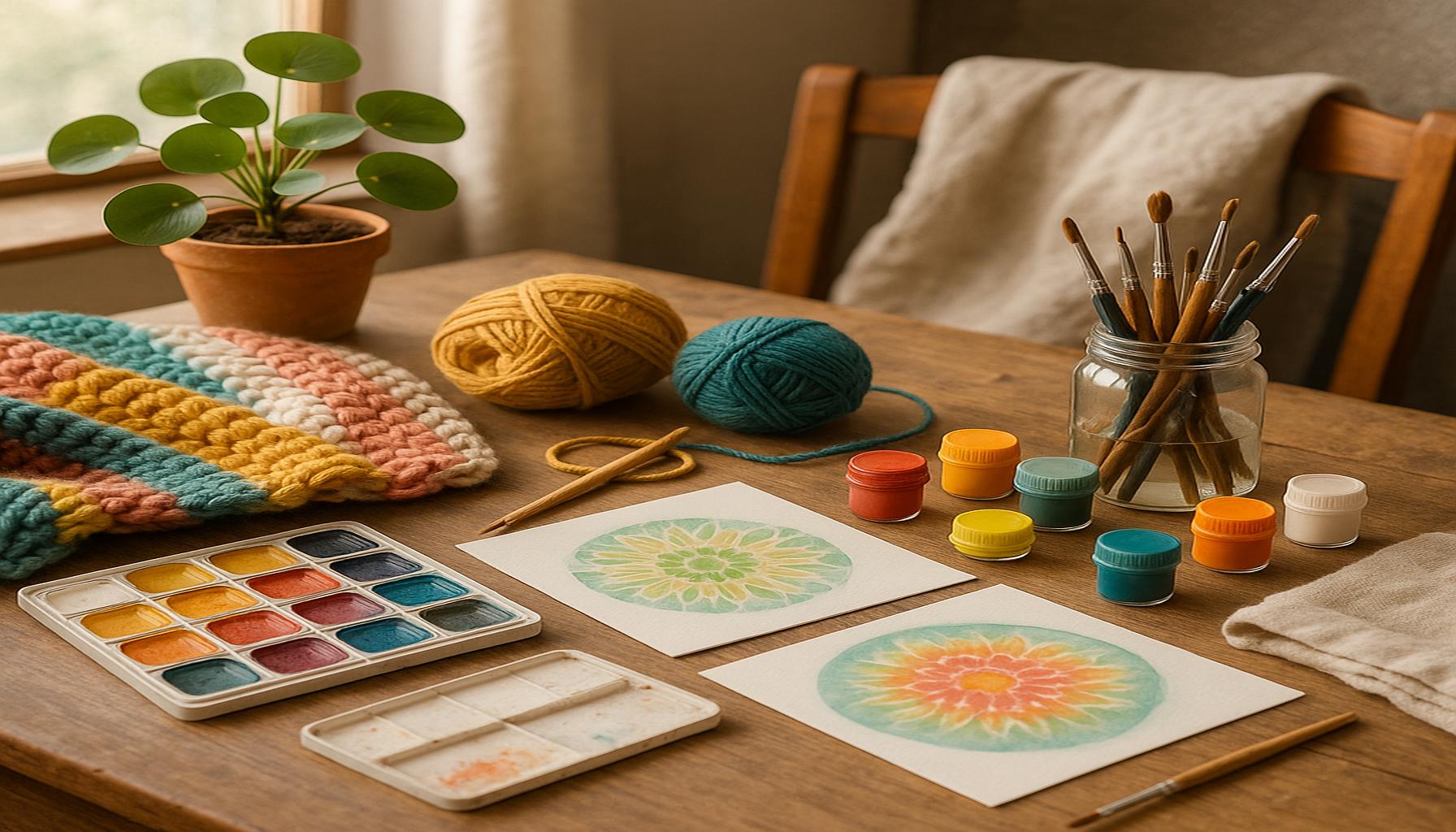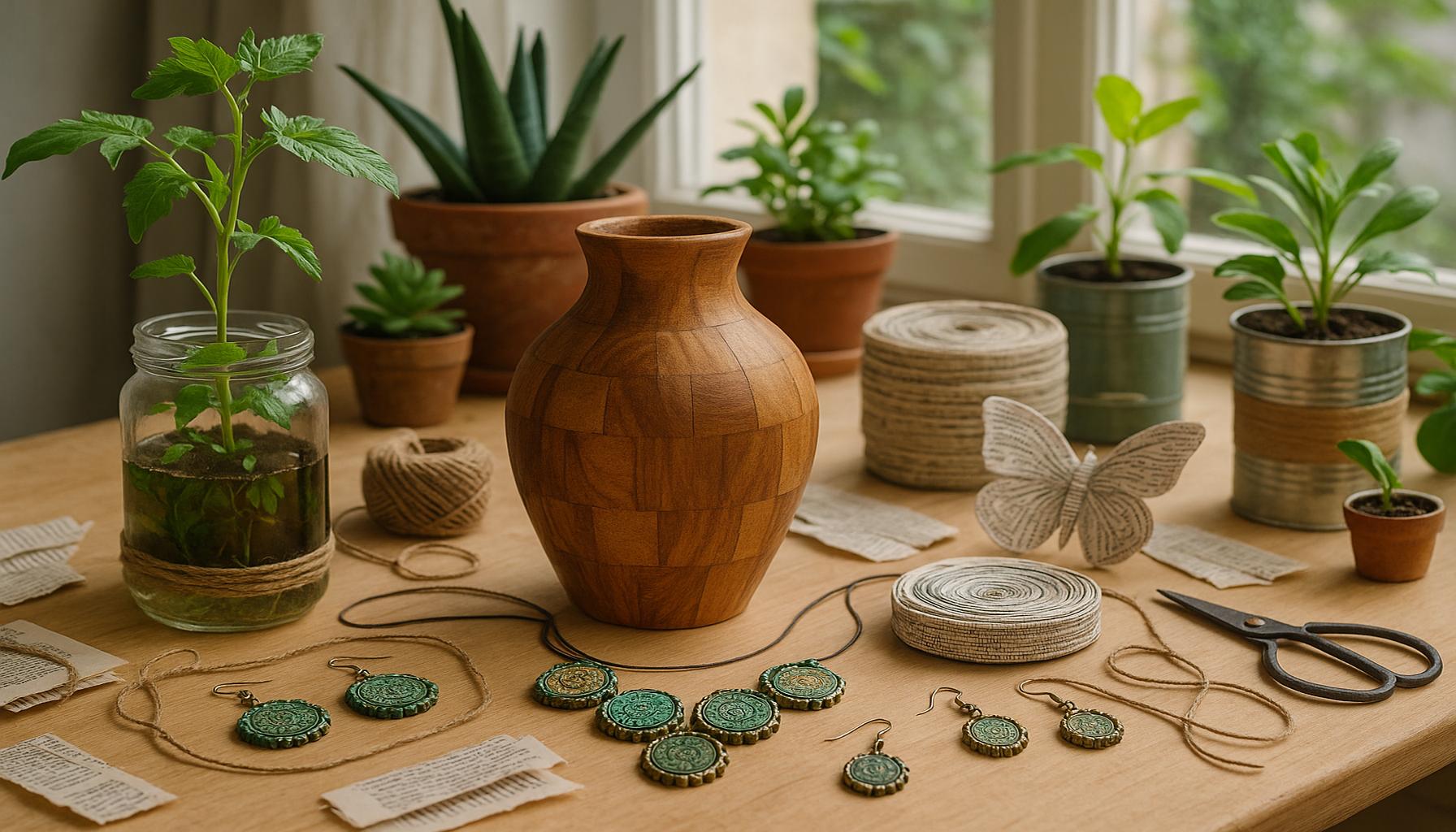The Impact of Crafting on Education: How Hands-On Activities Can Enhance Learning

The Power of Crafting in Education
In a rapidly evolving educational environment, the significance of hands-on activities has garnered greater recognition. Within this context, crafting stands out not just as an enjoyable activity but also as a formidable educational tool that enriches the learning experience. By integrating crafting into educational settings, educators can unlock a wide range of benefits that enhance student learning and engagement.
Enhanced Creativity
Crafting instills a sense of creativity and encourages innovative thinking. When students are engaged in making something from scratch, they tap into their imagination and learn to approach problems from different angles. For example, in a science classroom, students could design and build a model of a renewable energy source. This not only involves using their creativity to conceptualize but also challenges them to find practical solutions, such as the best materials to use for sustainability and efficiency. Such experiences promote critical thinking and can even spark interest in future careers in science and technology.
Improved Motor Skills
Hands-on crafting activities, such as cutting, gluing, and assembling, are instrumental in developing fine motor skills, especially in young learners. Activities like making paper mâché models or sewing simple patterns require precision and control, thus perfecting hand-eye coordination. These skills are foundational not just for art but also for tasks in everyday life, from writing to using tools. As students engage in these activities, they unknowingly build muscles and dexterity that will serve them throughout their educational journeys and beyond.
Increased Engagement
Students often find traditional lectures disengaging, but hands-on projects pull them into lessons that feel relevant and exciting. For instance, incorporating crafting into subjects like history could involve students recreating artifacts from different cultures, which helps them connect emotionally with the content. By making learning tangible, students are better able to understand and retain information, leading to an overall enhancement in academic performance.
Fostering Teamwork and Communication
Collaborative crafting projects are an excellent way for students to cultivate teamwork and communication skills. When students work together on projects, they learn to articulate their thoughts clearly and listen to differing viewpoints. This environment fosters a sense of community and responsibility. Whether they are building a group project or conducting an art show, the collaboration encourages students to refine their interpersonal skills, preparing them for future group dynamics in professional settings.

Real-World Applications and Social-Emotional Learning
The practical application of theoretical concepts becomes evident through crafting. For example, students might use geometry to design a 3D paper sculpture, merging math with art seamlessly. This suggests to students that skills learned in the classroom have direct applications in their lives, fostering a greater appreciation for their education.
Moreover, engaging in creative tasks promotes social-emotional learning. Crafting can be therapeutic, offering students a means to express their emotions and develop resilience. Activities like painting or pottery not only provide a creative outlet but also cultivate patience and persistence, traits that are essential for personal growth.
As educational institutions embrace these innovative methods, the integration of crafting into the curriculum emerges as a compelling approach. Recognizing the various advantages—including creativity, fine motor development, increased engagement, and social-emotional skills—can inspire educators to weave crafting into their teaching strategies, ultimately supporting students in their learning journeys and personal development.
DIVE DEEPER: Click here to discover the healing power of journaling
Transformative Learning Through Crafting
Crafting in education is not merely a pastime; it serves as a transformative learning approach that captures students’ interest while facilitating profound educational experiences. As more educators seek innovative methods to engage students, crafting emerges as a key player in reshaping educational landscapes. By incorporating hands-on projects into curricula, teachers create a vibrant environment where learning becomes interactive and experiential.
Developing Critical Thinking Skills
One of the most compelling advantages of incorporating crafting in educational settings is the enhancement of critical thinking skills. Crafting requires students to plan, design, and execute projects that demand thoughtful decision-making. For instance, when tasked with creating a visual presentation using recycled materials, students must consider the environmental impact, aesthetics, and functionality of their designs. This multifaceted problem-solving process encourages them to evaluate their choices critically and analyze the potential outcomes. The pivotal role of critical thinking in education extends beyond classroom walls, equipping students with skills necessary for excelling in various future endeavors.
Engagement Through Multi-Sensory Learning
Crafting inherently encourages multi-sensory learning, appealing to different styles of intelligence. Engaging with materials visually, audibly, and tactilely allows students to better absorb and retain information. For example, a lesson on ecosystems may involve students crafting dioramas that represent various habitats. By physically manipulating materials and assembling these projects, students gain a more profound understanding of ecological relationships. This hands-on approach leads to deeper learning, making complex subjects more accessible and relatable.
Bridging Cultural Gaps
In today’s diverse classrooms, crafting serves as a powerful medium for bridging cultural gaps and promoting inclusivity. Collaborative projects centered around cultural arts encourage students to share their backgrounds and experiences, fostering a sense of community and respect. For example, while creating quilts or other textile arts, learners can discuss their cultural significance, traditions, and personal stories behind them. This not only enriches the learning experience but also cultivates a global mindset among students. Such interactive dialogue enhances empathy and appreciation for diversity in the classroom.
Key Benefits of Crafting in Education
Teachers adopting crafting as a tool to enhance education can expect numerous benefits, including:
- Boosted Creativity: Nurtures innovative thinking and problem-solving.
- Enhanced Collaboration: Encourages teamwork through group projects.
- Improved Academic Performance: Creates engagement leading to better retention and understanding.
- Promotion of Real-World Skills: Teaches practical applications of theoretical knowledge.
- Social Skills Development: Fosters communication and interpersonal skills vital for future success.
As we reevaluate traditional instructional methodologies, the integration of crafting into educational practices reveals exciting potential for enriching students’ learning experiences. Through its multifaceted benefits, crafting becomes an invaluable asset in the pursuit of offering comprehensive, engaging, and meaningful education.
| Advantages | How They Enhance Learning |
|---|---|
| Improved Engagement | Hands-on activities capture students’ attention, making learning more interactive and enjoyable. Crafting encourages active participation. |
| Development of Critical Thinking | Crafting requires planning, problem-solving, and experimentation, fostering critical thinking skills essential for academic success. |
| Enhanced Motor Skills | Engaging in craft activities improves fine motor skills, which are linked to better performance in other academics, particularly in subjects like math and writing. |
Crafting is not just a leisure activity; it serves as a powerful educational tool. By integrating hands-on learning, students become more invested in their education. The tactile experience of creating fosters a deeper understanding of concepts, making them more relatable and easier to grasp. For instance, children learning about geometry through crafting can visualize shapes and spatial relationships better than through theoretical exercises alone. Additionally, the creativity involved in crafting enhances emotional expression, allowing students to convey ideas in unique ways. This combination of cognitive and emotional learning offers a comprehensive educational experience, proving invaluable in today’s learning environments. By emphasizing the advantages of crafting in education, educators can create curriculums that not only teach but inspire students to explore, innovate, and excel.
DIVE DEEPER: Click here to uncover the evolution of music
Crafting as a Tool for Emotional and Social Development
Moreover, crafting significantly contributes to the emotional and social development of students. In an era where social skills and emotional intelligence are emphasized alongside academic achievement, hands-on activities provide a nurturing platform for personal growth. While engaged in crafting, students often collaborate with peers, fostering relationships and developing essential communication skills. Activities such as group sculpture projects or collaborative painting sessions require students to share ideas, negotiate tasks, and appreciate different viewpoints. These interactions promote teamwork, a skill critical in both academic and future workplace contexts.
Empowerment Through Self-Expression
Crafting also empowers students by encouraging self-expression and individuality. When children create art or craft items, they communicate personal narratives, emotions, and perspectives. This process nurtures their self-esteem and encourages them to embrace their unique identities. For instance, designing personal journals or creating scrapbooks allows students to express their feelings, memories, and dreams visually. Such projects resonate with learners, making academic subjects more relevant to their lives while reinforcing the idea that their voices are valued within the classroom.
Promoting Mindfulness and Focus
The act of crafting can also serve as a form of mindfulness practice, enabling students to focus and engage fully with the task at hand. In today’s fast-paced digital age, cultivating the ability to concentrate is more critical than ever. Crafting requires patience and attention to detail, encouraging students to slow down and immerse themselves in the creative process. For example, activities like pottery or painting demand meticulousness and an appreciation for the gradual unfolding of an artistic vision. This focused engagement not only enhances their crafting skills but also translates into improved concentration during traditional academic tasks.
Integration of STEAM Education
Beyond emotional and social benefits, crafting aligns seamlessly with the principles of STEAM education—Science, Technology, Engineering, Arts, and Mathematics. The fusion of creativity with analytical skills creates a richer learning experience. By designing and building structures, such as bridges made of spaghetti or circuits in electronics projects, students apply mathematical concepts and scientific principles in tangible ways. This interdisciplinary approach reinforces the connection between various subjects, making theoretical knowledge more applicable and stimulating. According to a study by the Arts Education Partnership, students engaged in STEAM activities show a marked increase in problem-solving abilities, creativity, and even performance in standardized tests.
Encouraging Lifelong Learning
Perhaps one of the most important outcomes of crafting in education is the encouragement of lifelong learning. When students experience the satisfaction of creating something from inception to completion, they develop a desire to explore new skills and ideas. Educators who incorporate crafting often observe increased curiosity among students, leading them to pursue new subjects independently. Whether it’s learning to sew, woodworking, or experimenting with digital design tools, the foundational skills learned through crafting encourage students to seek knowledge beyond the classroom. This intrinsic motivation reinforces the idea that education is not a destination, but a continuous journey.
Clearly, the integration of crafting into educational practices transcends mere creative expression. It caters to the holistic development of students, fostering emotional resilience, cognitive mastery, and social competence. As educational paradigms continue to evolve, the essential role of crafting in enriching these experiences cannot be understated. By harnessing the transformative power of hands-on activities, educators unlock a world of possibilities that can empower learners across various dimensions.
DISCOVER MORE: Click here for tips on maximizing your small outdoor spaces
Conclusion: Crafting as a Catalyst for Educational Transformation
In summary, the exploration of crafting in education underscores its profound impact on enhancing learning across multiple dimensions. The hands-on nature of crafting not only enriches cognitive development through STEAM integration but also fosters vital emotional and social skills that are essential in today’s interconnected world. As students engage in projects that require collaboration and creativity, they learn to communicate, negotiate, and think critically—abilities that extend well beyond the classroom.
Additionally, crafting encourages self-expression and individuality, allowing students to convey their personal narratives and emotions confidently. This empowerment fosters a sense of belonging and boosts self-esteem, making learners more invested in their educational journeys. Through activities that promote mindfulness and focus, students cultivate a deeper ability to concentrate, which proves beneficial for their academic pursuits.
Ultimately, crafting reveals a pathway to lifelong learning, igniting curiosity and inspiring students to pursue knowledge autonomously. As we continue to redefine educational methodologies in a rapidly changing landscape, integrating hands-on activities like crafting becomes imperative. By embracing such transformative practices, educators can unlock a world bursting with creativity and innovation, turning classrooms into vibrant spaces for exploration and discovery. The potential of crafting to enrich education and shape resilient, well-rounded individuals is indeed a call to action for educators and policymakers alike.


